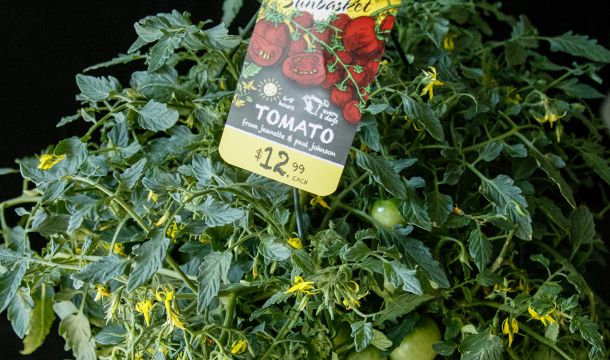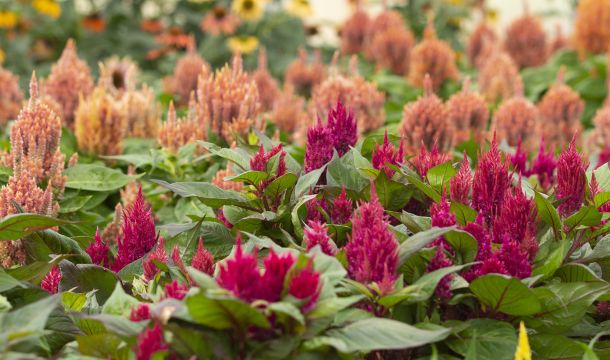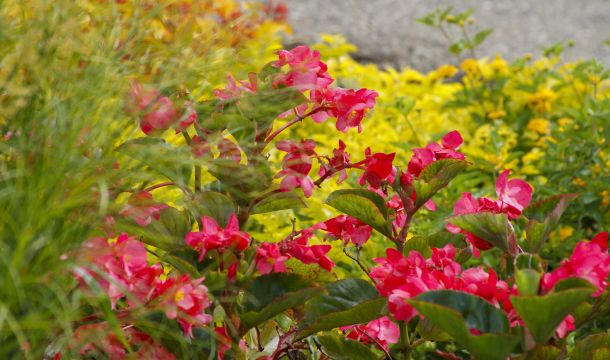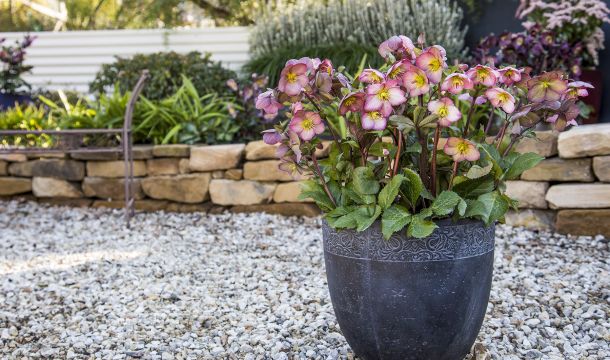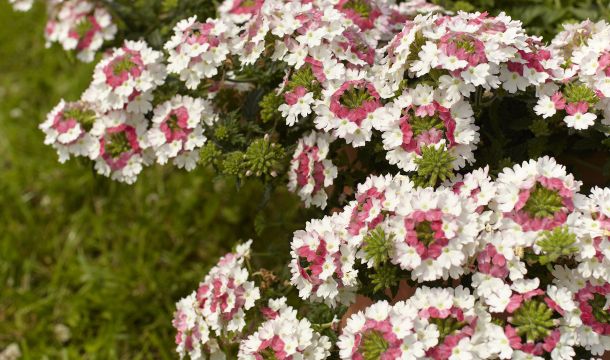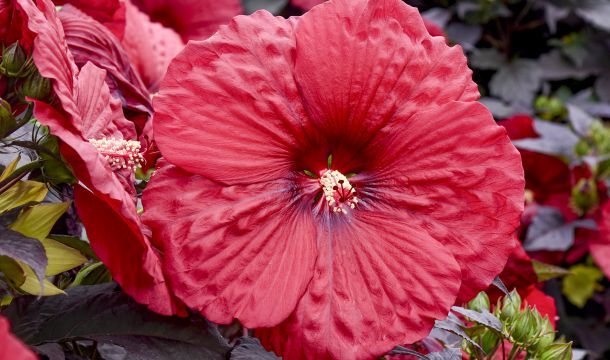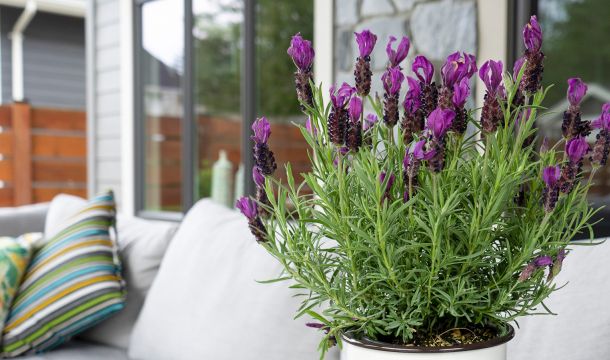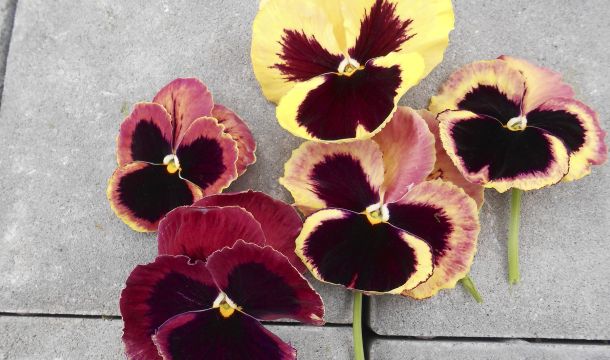Late Season Perennials
When you’re thinking about your autumn program, think about perennials. August heat often exhausts the color from summer gardens, turning spring color into summer green. Perennials offer a number of choices for late summer and early fall blooming, or simply for colorful foliage.
Another key selling point: perennials return year after year. A good chunk of customers look for that once-and-done feature, so it's handy to have summer to fall selection of sturdy color. Here’s a rundown of familiar cultivars that offer displays in late August and September and continue the display into autumn.
Pumpkin Spice is a blend of Heuchera (for the color) and Tiarella (for the leaf shape and markings). In the spring, plants display foamy flowers, but the fall brings out their golden maple-shaped flowers for an impressive autumn display. Best sited in the shade under trees.
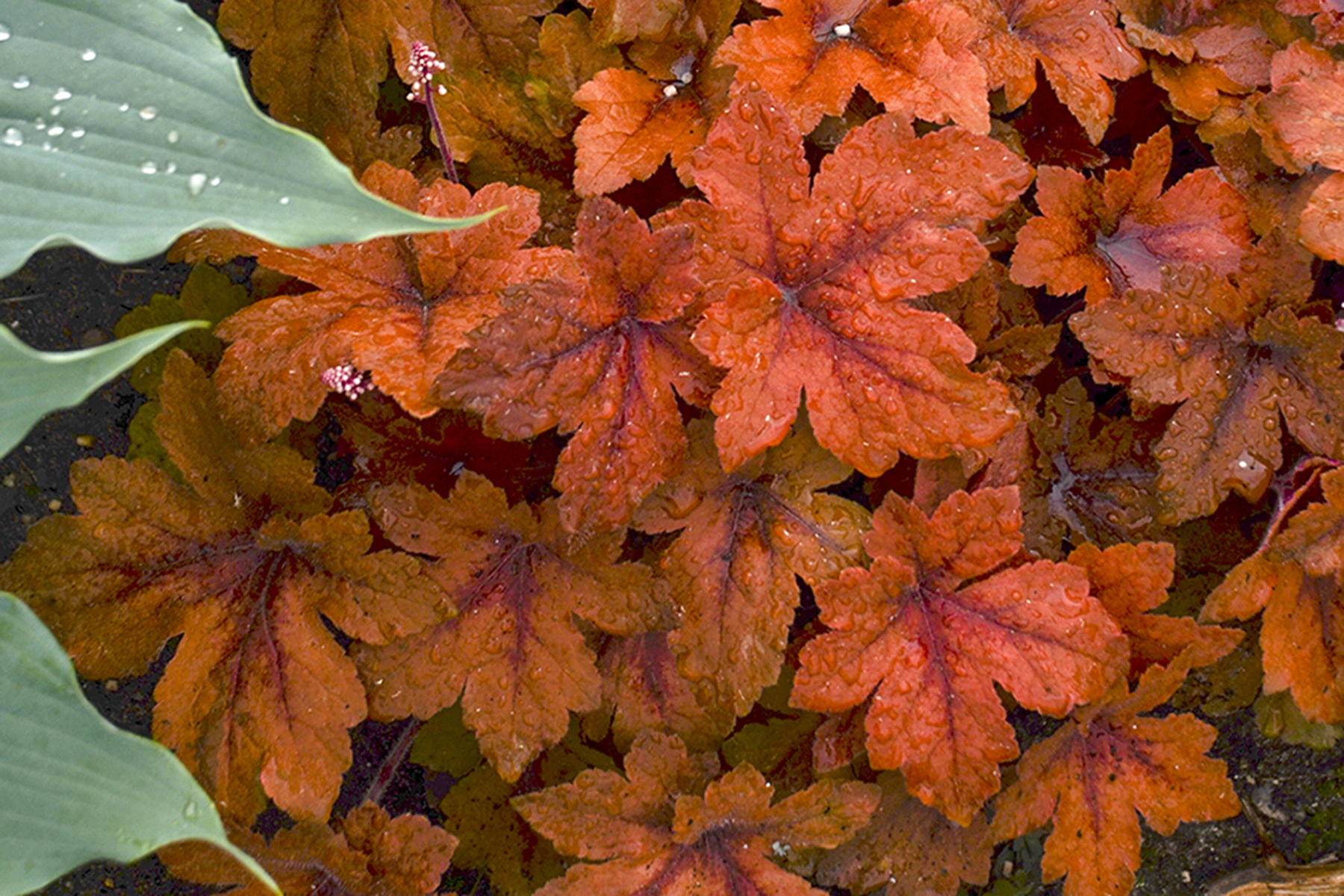 Heucherella Pumpking Spice
Heucherella Pumpking Spice
Foliage and Groundcovers
Heucheras have two prime seasons of sales: spring and autumn. Most will pull back during the high summer but then the plants recharge, flushing with color for the cooler autumn temperatures. Among the multitude of heuchera varieties there are some that come in warm tones particularly suited for fall sales. Caramel (golden), Peach Flambe (peach), Electric Plum (purple), and Fire Alarm (red) are a few brilliant selections.
Of special note are Forever Purple, Forever Red and Forever Midnight, three selections that keep their vivid color to the end of the season. These can be planted in full sun though they tolerate a bit of shade. In the retail center it’s important to place heucheras in a sunny section. Sun toasting is key to keeping Heuchera's fall colors vibrant.
Heucherella is a cross between heuchera and tiarella. For autumn work, the beautiful foliage drives the sales, and several varieties come in rich, warm shades and/or leaf shapes that scream fall. Some of these are Pumpkin Spice (maple leaf-shaped with strong orange colors and dark veining); Sweet Tea (maple leaf-shaped with warm orange tones and deep red veins); Copper King (maple-like leaves of bright orange with bronze-red veining and yellow edging); and Brass Lantern (maple-like leaves of brassy gold & red to olive & brown).
Some groundcovers work with autumn reds and golds. Ceratostigma plumbaginoides (red), Hypericum Brigadoon (bright yellow-gold), and Sedum Angelina (darker gold) are three that come to mind. Max Frei, a groundcover geranium, adopts a crimson color as its leaves go dormant.
Look to the Mariachi series of the Heleniums to bridge between summer and autumn. Their heavy coverage of color starts in mid-summer and continues through the heat of August. The Mariachi series comes in solids from reds to oranges to yellows as well as several ringed bi-colors.
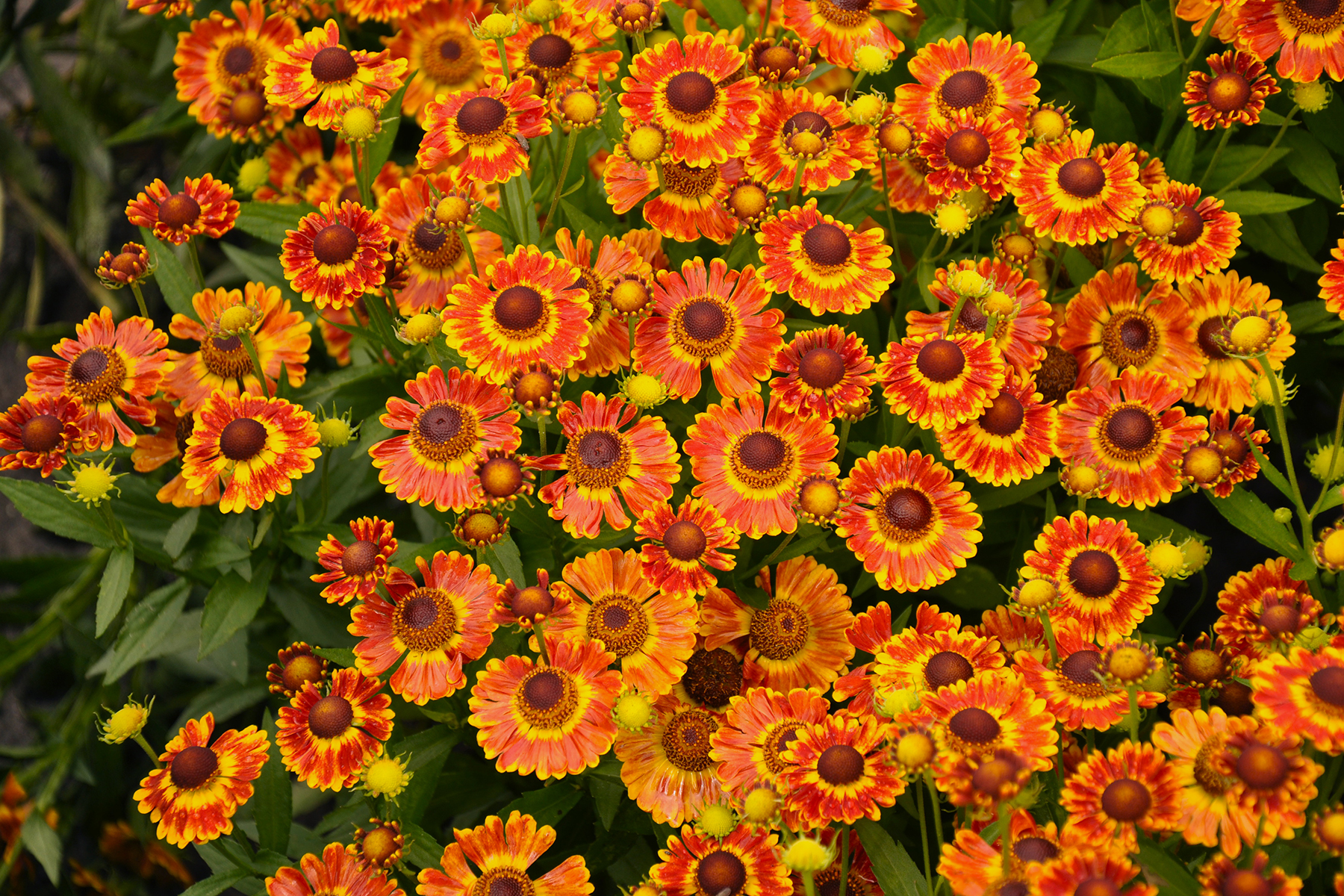 Helenium Mariachi Fuego
Helenium Mariachi Fuego
Mid-Sized Flowering Plants
Helenium has small flowers that make a thick coat of color over the top of the plant. Wilder species can get large and lumpy so consider the Mariachi series for its good garden manners. Plants are short, neat, and tidy, and come in lots of different colors. Another mid-sized choice is Helianthus Autumn Gold. With abundant yellow daisy-like flowers it’s a good coreopsis follow-up, to keep the look going into fall.
Upright sedum is the way to go for pollinators, with flat, wide platforms full of nectar. Autumn Joy has pink flower clusters on strong, sturdy stems that turn to a beautiful maroon-bronze in fall. Autumn Charm has variegated foliage with creamy yellow edges and green centers; in mid-September white buds turn to pink, then russet red. Sedum Matrona has pretty pink flower heads and blue-gray foliage that’s enhanced by dark red stems and midribs.
Rudbeckia is a hallmark of late summer and early autumn, and American Gold Rush is the best, renowned for its disease-resistance and beautiful mounded habit. It’s a classic black-eyed Susan with golden yellow petals around a deep black eye. At about knee-high this variety is mid-sized for rudbeckia.
Cherry Brandy is another knee-high variety, producing deep maroon-red flowers with dark chocolate centers. Shorter is Sahara at a little over a foot, with velvety brown centers surrounded by petals in a rainbow of colors from muted shades of antique rose, caramel, and peach to more brilliant pinks, oranges, and a range of yellows. Colors morph over the season like a radiant desert sunset.
Solidagos display their small flowers in dense but wide sprays in the manner of Achillea or Sedums, but in more casual and loosely held style. 'Sugar Kisses' is a vanilla-color version of the prairie citizen, blended to settled into a wide range of garden soils.
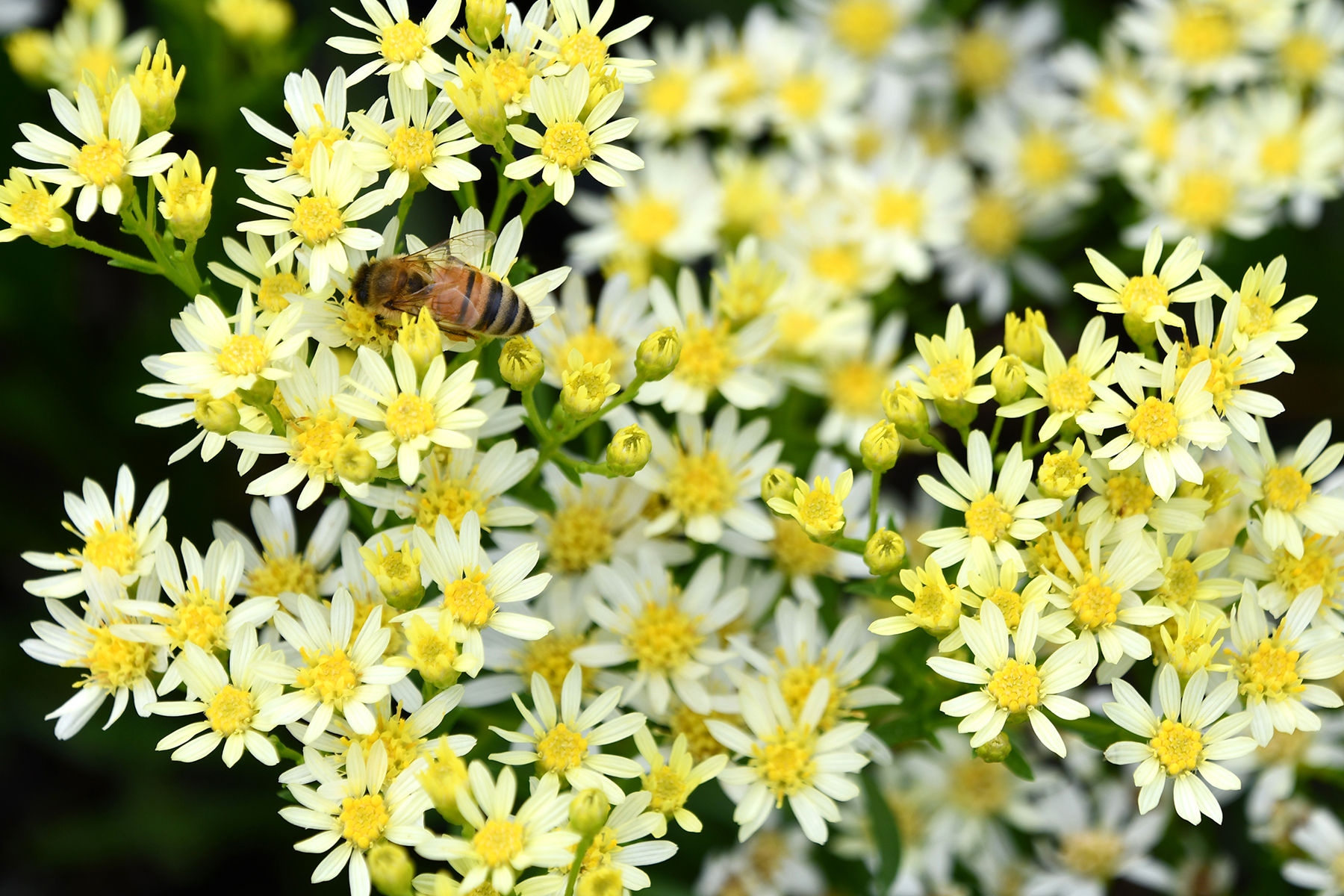 Solidago Sugar Kisses
Solidago Sugar Kisses
Tall and Bushy Perennials
At the taller end is Prairie Glow reaching about chest-high, with a fiery blood orange eye surrounding a black cone. The eye starts out light and intensifies as the flower ages. Also tall—about as tall as you—is Autumn Sun (Herbstonne), resembling a coneflower with bright yellow petals around green cones. Tall rudbeckias like these can be planted along fences or other tall features in the garden.
Beautiful solidago is popular among pollinators. Fireworks is a unique variety with graceful golden yellow flower spikes darting in all different directions like pyrotechnics on the Fourth of July. Sugar Kisses is a warm sweet vanilla, where typically white flowers are kissed with creamy yellow centers.
Tricyrtis is an unsung hero of autumn shade gardens. The plant grows like a late summer lily, but the flowers emerge abundantly in an orchid shape. They do well nestled into darker corners of homes and trees and create a generous stand when left alone.
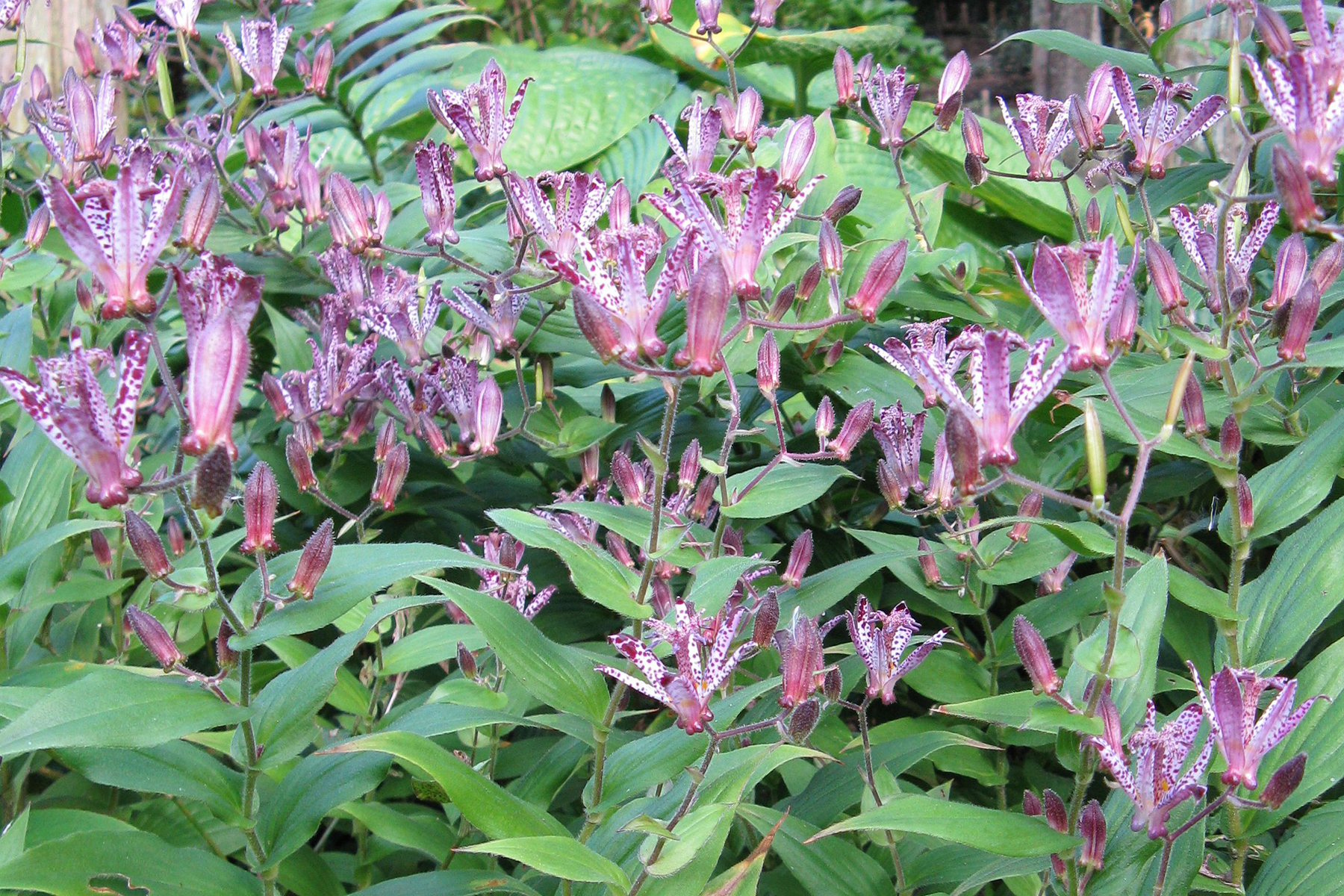 Tricyrtis Sinonome
Tricyrtis Sinonome
Some Shade Selections
Amsonia hubrechtii has white or blue flowers in spring but is sold for its brilliant golden fern-like foliage in the fall. Only hubrechtii displays this golden color, and the best cultivar in my opinion is Butterscotch, an improvement over the basic species.
Graceful anemone, or windflower, blooms from late summer into fall. Honorine Jobert is still a highly requested cultivar at over 100 years old. Single snow-white flowers have striking yellow centers. Fantasy Pocahontas has a slightly different look with double pink flowers that have ruffled edges.
A connoisseur’s plant, the toad lily has very tall stems that reach about chest-high. Flowers appear on the tips and have an intricate shape resembling an orchid. Tricyrtis Seiryu has white flowers with deep purple spots at the base, deepening to light lavender-blue at the petal tips. Samurai is one of the very few variegated tricyrtis cultivars. It has shiny green foliage with a showy gold margin and spotted purple flowers. In early autumn Tricyrtis Sinonome is covered by loads of white blooms heavily speckled with dark purple.
Andropogons are reedy grasses whose stems intensify with color as their chlorohphyll drains drains in the autumn. The fine lines of Red October, reaching nearly six feet in height, will turn a dark burgundy before becoming a brilliant scarlet after the first frost. Toast this one in full sun for best color.
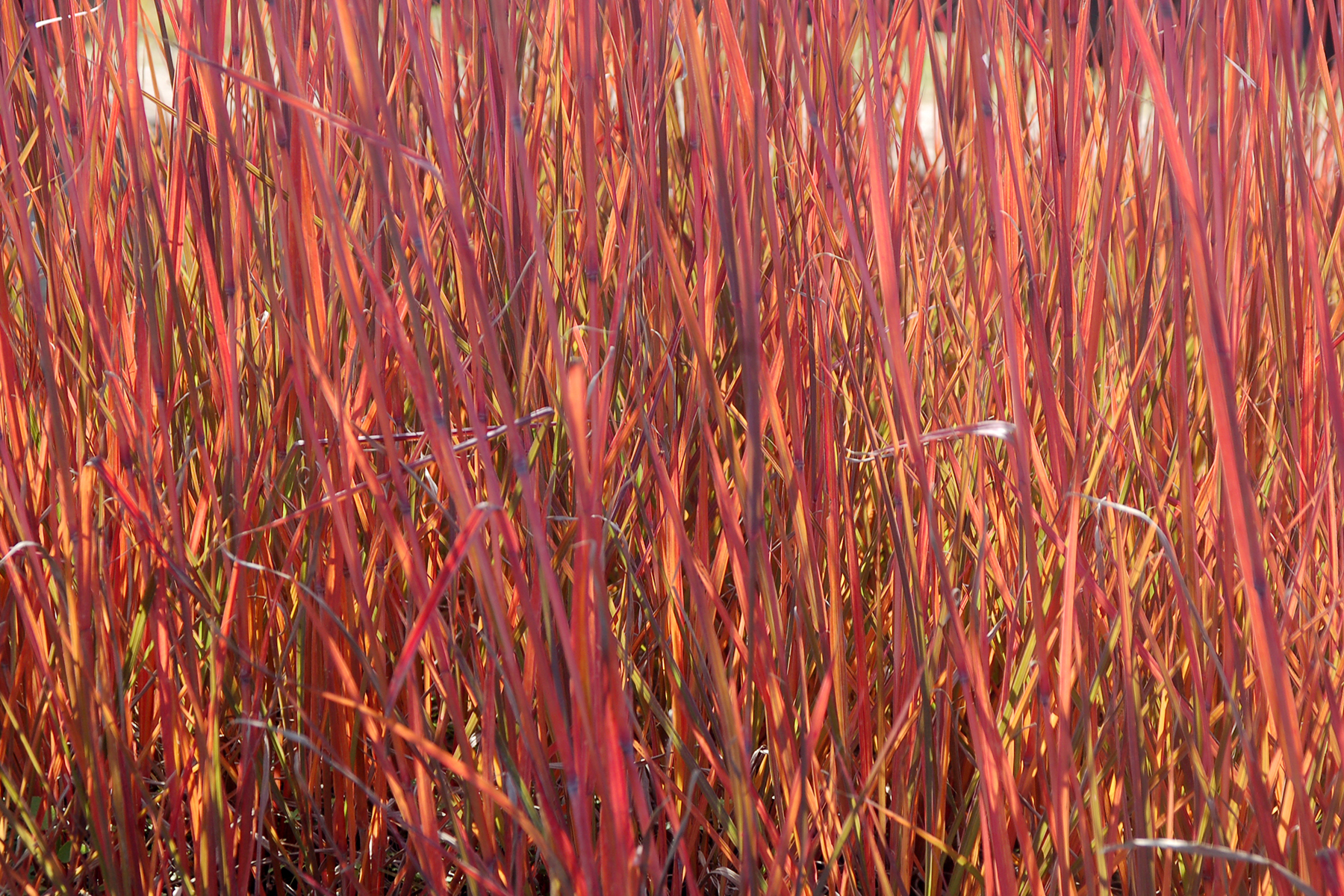
Warm Season Grasses
Offering a wide variety of plumes above their grassy tufts, warm season grasses make an excellent textural addition to the autumn perennial lineup. These are often used in stands like, or in place of, foundation plants such as arborvitae, dwarf Alberta spruce, or boxwood.
Hardy pennisetums like Red Head have foxtail plumes. In this four-foot variety the red inflorescence appears in the beginning of August, one month earlier than most.
Miscanthus cultivars have very tall plumes. High Frequency, for instance, at over six feet tall flowers in fall with an impressive display of feather-like flower heads. It also has banded variegated foliage that resembles Gold Bar so it’s eye-catching even when not in bloom. Unlike Gold Bar it’s a sterile variety so it doesn’t reseed freely.
Andropogon colors often intensify for the fall. Blackhawks’ darker green foliage takes on a deep purple in midsummer, intensifying to dark purple and near black in some parts of the five foot tall plant. Purplish finger-like flower clusters appear in late summer. Another tall, upright variety, Red October, has finer foliage with leaves that emerge deep green, typically with some red tips, starting in spring. In August the red highlights increase and deepen to a rich burgundy red, and red flowers begin to appear. After the first frost, usually in October, the foliage turns to a more striking scarlet red.
For a Miscanthus hedge, grow 'High Frequency'. Most Miscanthus seed freely and some communities consider them a nuisance. However, 'High Frequency' is functionally sterile, but it still has that popular gold bar across the blade.
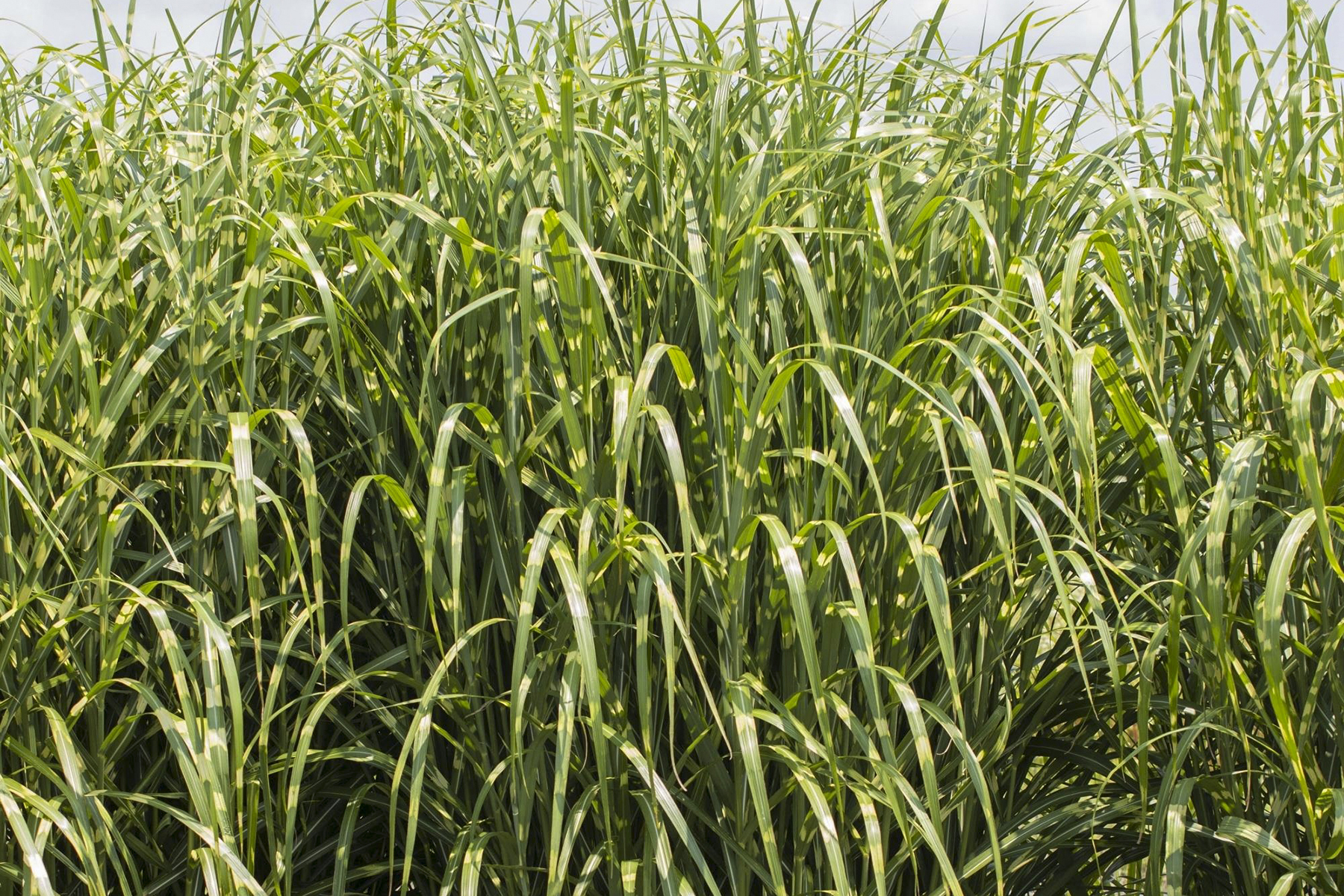
Popular Articles
